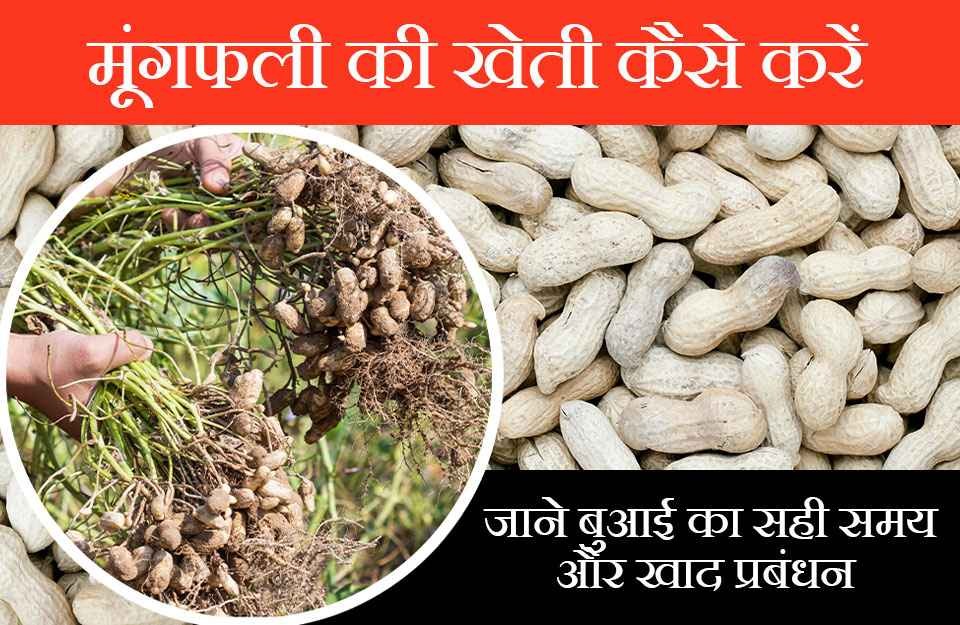
Peanuts play a significant role in Indian agriculture, being not only a staple food crop but also in high demand for its oil in the domestic market. Hence, it's often referred to as the "farmer's cashew". Peanut cultivation, alongside sesame, spans over 4500 hectares in both seasons. Peanut oil contains 45 to 55 percent fat, 28 to 30 percent protein, and 20-25 percent carbohydrates, along with abundant minerals such as vitamin B, vitamin C, calcium, magnesium, phosphorus, zinc, potassium, among others. The productivity of Kharif peanuts is approximately 1300 kilograms per hectare. States like Madhya Pradesh, Punjab, Rajasthan, and Gujarat are notable for emphasizing peanut cultivation, while Tamil Nadu, Karnataka, Andhra Pradesh, and Gujarat are major peanut-producing states in India. Globally, India holds the top rank in peanut production.
Peanuts hold a significant position in Indian agriculture as an important oilseed crop after soybeans. While China leads globally in peanut production, India holds the second position. The decrease in Kharif peanut crop from 85.62 lakh tonnes last year to 78.29 lakh tonnes in 2023-24 indicates a decline. The minimum support price (MSP) for peanuts increased to ₹6377 per quintal in 2023. In Rajasthan, peanuts were cultivated in an area of 3.47 lakh hectares, yielding approximately around 6.81 lakh tonnes. Peanuts contain a protein content of 25-30 percent and are found within the soil. Farmers can achieve good yields and profits through peanut cultivation.
For fine tillage up to a depth of 25-30 cm, cross-tilling should be done. In May, one tillage of the field should be done using a plow that turns the soil, followed by 2-3 harrowings to make the soil crumbly. Then, level the field using a plank. It is essential to maintain moisture in the soil and its friability. Deep tillage in rainy areas is beneficial as it helps manage soil-borne diseases and increases the availability of nutrients in sandy and loamy soils. After collecting and removing rice stubbles, the best soil tillage should be done. During the final preparation of the field, gypsum should be used at the rate of 2.5 quintals per hectare.
India, peanut cultivation occurs during two distinct seasons - Kharif (June-July to September-October) and Rabi (October-November to January-February). Peanut farming flourishes in warm and humid climates, with harvesting taking place during dry weather.
Peanut planting typically commences in the early Kharif season, usually between the first fortnight of June and July. Planting peanuts in January, when moisture levels are low, leads to insufficient moisture for crop growth, resulting in poor yields. In areas with irrigation facilities, planting can extend from January to February. Seed rates and spacing vary depending on the variety. For Spanish (dwarf) varieties, the common spacing is 30x10 cm, requiring 100-110 kilograms of seeds per hectare to achieve a population of approximately 3.33 lakh plants. In spreading varieties, the typical spacing is 45x10 cm, requiring around 95-100 kilograms of seeds per hectare to reach a population of about 2.22 lakh plants. Seeds should be treated with Rhizobium. Mixing approximately 375-500 grams of Rhizobium culture with rice paste or another sticky substance per hectare ensures uniform seed coating. Planting depth should be 3-4 cm, with thorough soil coverage.
Climate and Soil Conditions for Peanuts: Peanuts thrive in regions receiving 600 to 1500 millimeters of annual rainfall. Deep, well-drained soils with high fertility are optimal for peanut cultivation. While peanuts can be grown in various soil types, loamy soils enriched with calcium and organic matter are preferred for better yields. Maintaining a soil pH between 6.0 to 8.0 is crucial for successful peanut cultivation.
Primary Peanut Varieties in India: India boasts various peanut varieties, including Runner, Java or Spanish, Red Nut, and others. Among the prominent ones cultivated in the country are Kadiri-2, Kadiri-3, BG-1, BG-2, GAUG-10, Kuber, PG-1, T-28, T-64, Chandra, Chitra, Kosali, Prakash, Amber, 'J-20', 'JG-11', 'Kadiri-55', JGUG-10, JG-11, JG-12, JG-20, JL-24, TG 26, TG 37A, TG 24, and JB 24, among others. These varieties are selected for their specific traits, including disease resistance.
Weed Management: Weeds can inflict significant damage to peanut crops up to 45 days after planting, posing a major challenge to yield. Weed control represents a significant obstacle to peanut production. To mitigate weed growth, they should be removed 20-25 days post-planting. Employing repeated intercultivation with peanuts proves to be an effective method for weed eradication. For efficient and cost-effective weed management, it is advisable to apply 1.0 kilogram per hectare of pendimethalin with two intercultivations 30-45 days after planting.
Read More: Saffron Cultivation in India, Different Varieties and Benefits and Uses Know
Water Management: Peanut crops typically necessitate approximately 600-700 millimeters of water depending on soil type. Irrigation during periods of moisture scarcity can boost pod yield by up to 30-35%. Peanuts do not demand excessive watering as they are usually cultivated around the monsoon season. Post-monsoon, plants require water at 20-day intervals during flowering and pod formation. Ensuring adequate moisture in the field throughout this period is vital for achieving a good yield.
Fertilizer and Nutrient Management:
Read More: Summer is the right time for moong cultivation, More Production
Peanut Harvesting: Peanuts should be harvested when 75-80% of the pods are fully matured. Harvesting is recommended when leaves turn yellow, spots appear on leaves, old leaves fall, and a deep brown color develops inside pods. The harvested crop intended for seed should be thoroughly dried until the moisture content reaches 7-8% and then stored in polyethylene bags.